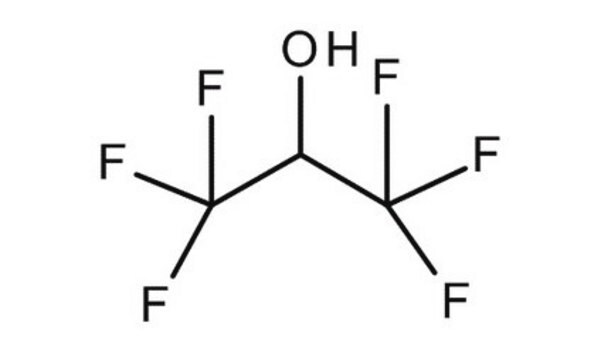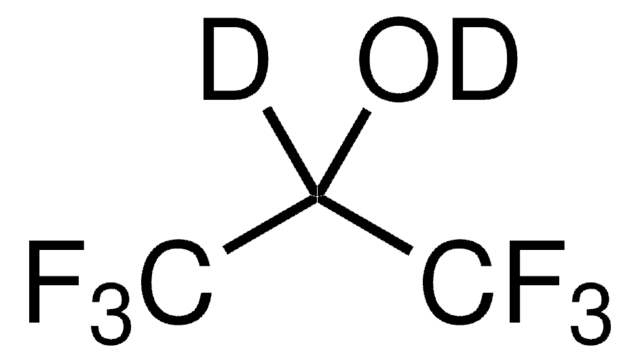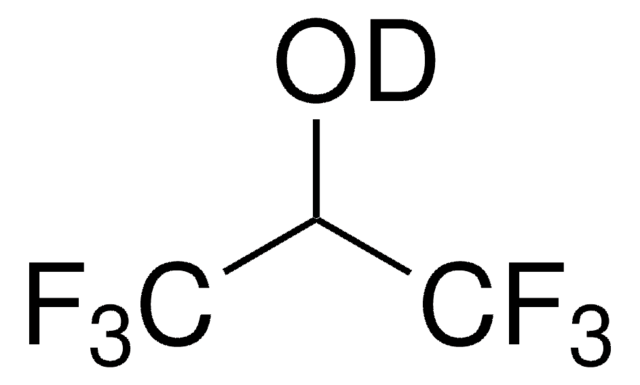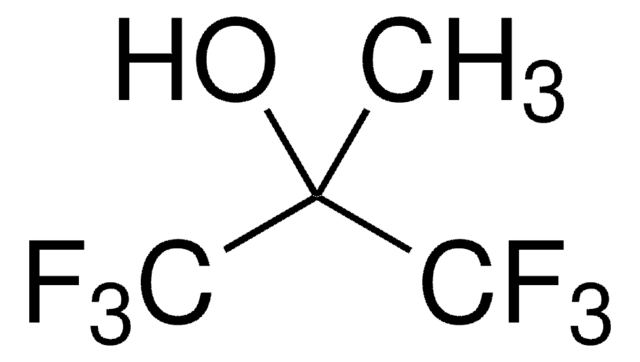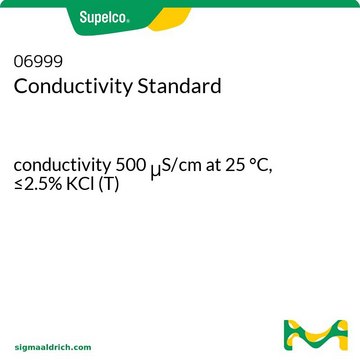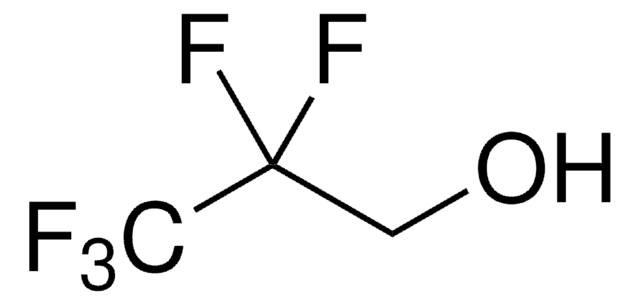Kluczowe dokumenty
52517
1,1,1,3,3,3-Hexafluoro-2-propanol
for GC derivatization, LiChropur™, ≥99.8%
Synonim(y):
HFP, Hexafluoroisopropanol
About This Item
Polecane produkty
klasa czystości
for GC derivatization
Poziom jakości
Próba
≥99.8% (GC)
≥99.8%
jakość
LiChropur™
przydatność reakcji
reagent type: derivatization reagent
reaction type: Acylations
reagent type: derivatization reagent
reaction type: Esterifications
metody
gas chromatography (GC): suitable
współczynnik refrakcji
n20/D 1.275 (lit.)
tw
59 °C (lit.)
mp
−4 °C (lit.)
gęstość
1.596 g/mL at 25 °C (lit.)
ciąg SMILES
OC(C(F)(F)F)C(F)(F)F
InChI
1S/C3H2F6O/c4-2(5,6)1(10)3(7,8)9/h1,10H
Klucz InChI
BYEAHWXPCBROCE-UHFFFAOYSA-N
Szukasz podobnych produktów? Odwiedź Przewodnik dotyczący porównywania produktów
Opis ogólny
Zastosowanie
Inne uwagi
Informacje prawne
Hasło ostrzegawcze
Danger
Zwroty wskazujące rodzaj zagrożenia
Zwroty wskazujące środki ostrożności
Klasyfikacja zagrożeń
Eye Dam. 1 - Repr. 2 - Skin Corr. 1A - STOT RE 2
Kod klasy składowania
8A - Combustible corrosive hazardous materials
Klasa zagrożenia wodnego (WGK)
WGK 2
Temperatura zapłonu (°F)
No data available
Temperatura zapłonu (°C)
No data available
Środki ochrony indywidualnej
Faceshields, Gloves, Goggles
Wybierz jedną z najnowszych wersji:
Masz już ten produkt?
Dokumenty związane z niedawno zakupionymi produktami zostały zamieszczone w Bibliotece dokumentów.
Klienci oglądali również te produkty
Nasz zespół naukowców ma doświadczenie we wszystkich obszarach badań, w tym w naukach przyrodniczych, materiałoznawstwie, syntezie chemicznej, chromatografii, analityce i wielu innych dziedzinach.
Skontaktuj się z zespołem ds. pomocy technicznej
